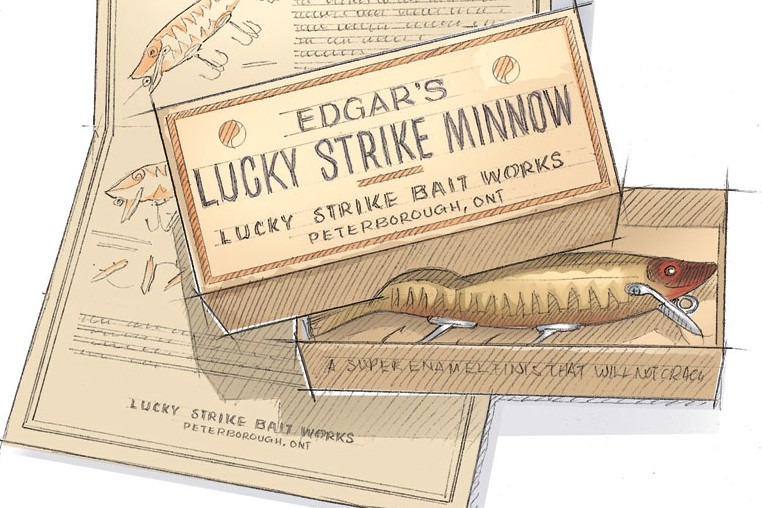What you need to know before you get started
Advertisement
Lures are the eye candy of fishing tackle, and collecting them can be an enjoyable sideline—especially when it comes to vintage lures. Not only do they evoke nostalgia for angling of yore, vintage lures can also make for a wise investment. Here’s what you need to know to get your collection started.
1. Do some research
Read books and old angling catalogues, and talk to knowledgeable collectors before getting serious. Finding a vintage lure is easy, but identifying it and determining its worth isn’t (lures made before 1940 are generally considered to be antiques). Before you buy, familiarize yourself with the manufacturer’s various models, including their product and paint numbers and unique characteristics.
Advertisement
2. Find your niche
While Heddon, Shakespeare and Creek Chub may be popular antique brands, their lures can be frustrating to collect because of the sheer volume that has been produced. It’s much less daunting to focus on smaller makers with fewer models, such as Canada’s Hex, Lucky Strike and Williams.
3. Consider condition
With rare exceptions, the lure’s condition is the most important factor in determining its value. A lure sporting its original paint job, even if faded or cracked, is more valuable than a touched-up or repainted lure. Ensure, too, that it still has its original hardware and eyes. And if you’re buying online, make sure you see lots of clear pictures from all sides of the lure.
4. Keep the box
An antique lure is worth more if it comes with its original box, and more still if it’s accompanied by the manufacturer’s literature about the lure. In fact, so few boxes and accompanying papers survive, they’re often considered more valuable than the lures themselves. The packaging also provides model numbers and paint options that can help identify other lures.
Advertisement
5. Be proactive
While the Internet is becoming an increasingly popular means of finding antique lures, it’s not necessarily the most reliable, cheapest or enjoyable way of collecting. Half the fun of lure hunting is searching through antique shops, garage sales and sporting shows. And let other people know you’re a collector—they may give you first dibs on their unwanted old tackle. You can also post flyers at marinas, hand out business cards and be nice to relatives with old tackleboxes salted away in their attics.
6. Join a club
Lure collecting clubs are great sources of information, providing a forum for chatting with other collectors. Two clubs of note are the Canadian Antique Fishing Tackle Association—which holds an annual show-and the U.S. National Fishing Lure Collectors Club
Advertisement
7. Do it for love
While the promise of finding the holy grail of antique lures and getting rich may be one reason to collect, most people do it because they love old lures. Antique lures are attractive works of art, and opening an old lure box is akin to opening a tiny time capsule. If you can appreciate that, then you’re ready to collect.

